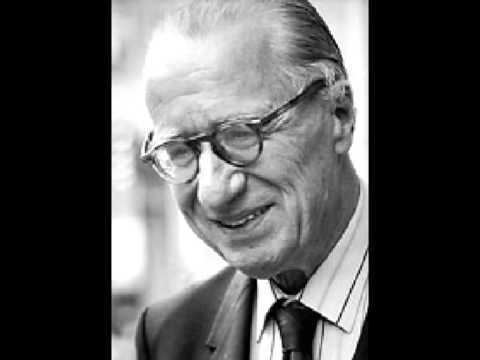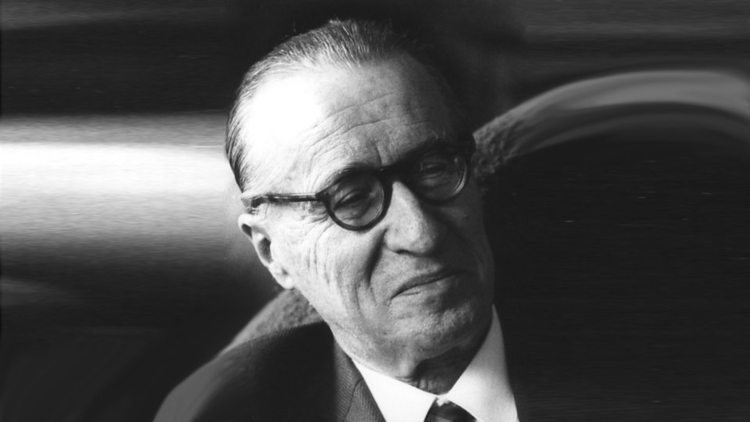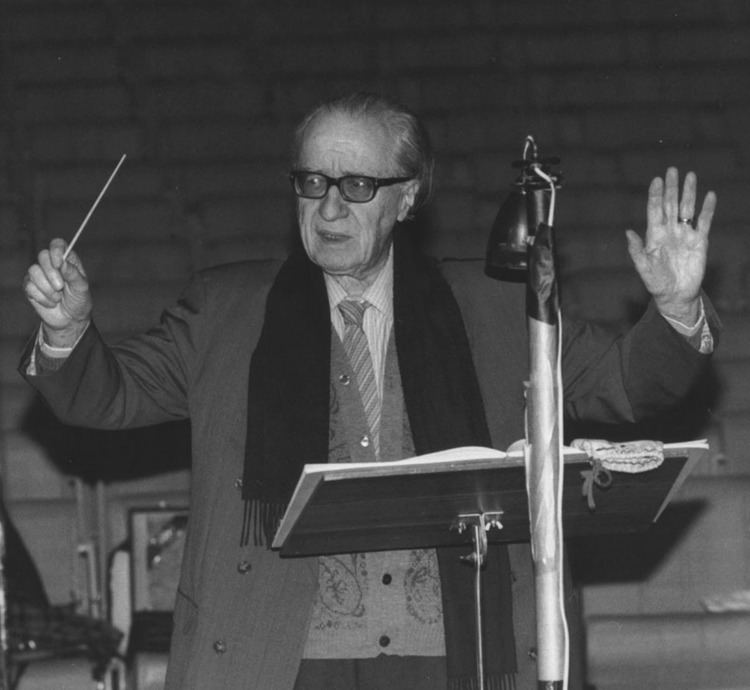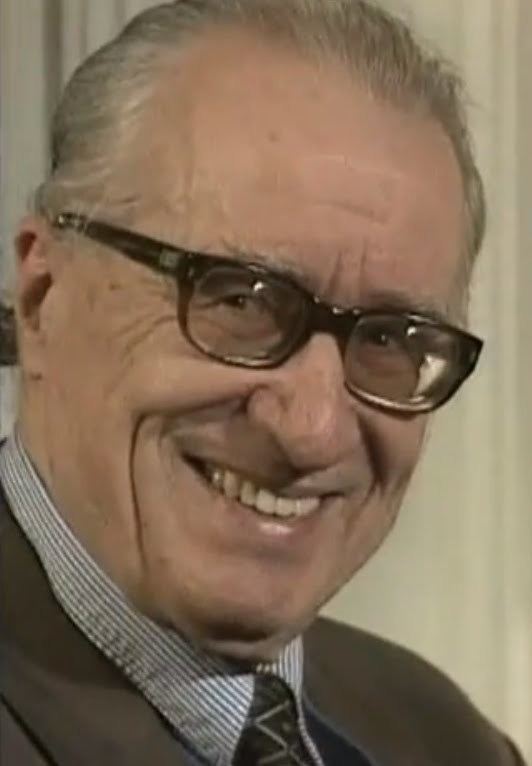Name Jean Francaix Role Composer | Education Conservatoire de Paris Children Claude Francaix | |
 | ||
Died September 25, 1997, Paris, France Compositions Clarinet Concerto, Clarinet Concerto, Petit quatuor pour saxophones: III Serenade comique, Petit quatuor pour saxophones: III Serenade comique, Suite carmelite: Sœur Constance, Suite carmelite: Sœur Constance, Concerto pour clavecin et ensemble instrumental: I Toccata I, Concerto pour clavecin et ensemble instrumental: I Toccata I, Divertimento pour flute et piano: V Finale, Divertimento pour flute et piano: V Finale, Concertino pour piano et orchestre: III Allegretto, Concertino pour piano et orchestre: III Allegretto, Quintette nº 2 pour flute - trio a cordes et harpe: I Allegrissimo, Quintette nº 2 pour flute - trio a cordes et harpe: I Allegrissimo, Divertimento pour flute et piano: IV Romanza, Divertimento pour flute et piano: IV Romanza, Cinq danses exotiques pour saxophone et piano: III Mambo, Cinq danses exotiques pour saxophone et piano: III Mambo, Suite carmelite: Sœur Mathilde, Suite carmelite: Sœur Mathilde, Concerto pour clavecin et ensemble instrumental: V Finale, Concerto pour clavecin et ensemble instrumental: V Finale, Petit quatuor pour saxophones: I Gaguenardise, Petit quatuor pour saxophones: I Gaguenardise, Le Gay Paris: I Marche, Le Gay Paris: I Marche, Sonatine pour trompette et piano: II Sarabande, Sonatine pour trompette et piano: II Sarabande, Suite carmelite: Mere Marie de L’Incarnation, Suite carmelite: Mere Marie de L’Incarnation, Divertimento pour flute et piano: III Perpetuum mobile, Divertimento pour flute et piano: III Perpetuum mobile, Cinque piccoli duetti: III Canzonetta, Cinque piccoli duetti: III Canzonetta, Suite carmelite: Sœur Blanche, Suite carmelite: Sœur Blanche, Sonatine pour trompette et piano: III Gigue, Sonatine pour trompette et piano: III Gigue, Cinque piccoli duetti: V Rondo, Cinque piccoli duetti: V Rondo, Concerto pour clarinette et orchestre: II Scherzando, Concerto pour clarinette et orchestre: II Scherzando, Trio for Violin - Viola and Cello in C major: 4 Rondo Vivo, Trio for Violin - Viola and Cello in C major: 4 Rondo Vivo, Quintette nº 2 pour flute - trio a cordes et harpe: IV Rondo, Quintette nº 2 pour flute - trio a cordes et harpe: IV Rondo, Cinque piccoli duetti: I Preludio, Cinque piccoli duetti: I Preludio, Trio for Violin - Viola and Cello in C major: 3 Andante, Trio for Violin - Viola and Cello in C major: 3 Andante, Concertino pour piano et orchestre: IV Rondeau, Concertino pour piano et orchestre: IV Rondeau, Concerto pour clavecin et ensemble instrumental: II Toccata II, Concerto pour clavecin et ensemble instrumental: II Toccata II, Divertissement pour hautbois - clarinette et basson: I Prelude (Moderato), Divertissement pour hautbois - clarinette et basson: I Prelude (Moderato), Concerto pour clavecin et ensemble instrumental: III Andantino, Concerto pour clavecin et ensemble instrumental: III Andantino, Sonatine pour trompette et piano: I Prelude, Sonatine pour trompette et piano: I Prelude, Suite carmelite: Sœur Anne de La Croix, Suite carmelite: Sœur Anne de La Croix, Concerto pour clavecin et ensemble instrumental: IV Menuet, Concerto pour clavecin et ensemble instrumental: IV Menuet, Theme et variations pour clarinette et piano, Theme et variations pour clarinette et piano, Concerto pour clarinette et orchestre: III Andantino, Concerto pour clarinette et orchestre: III Andantino, Divertissement pour hautbois - clarinette et basson: II Allegretto assai, Divertissement pour hautbois - clarinette et basson: II Allegretto assai, Divertimento pour flute et piano: II Notturno, Divertimento pour flute et piano: II Notturno, Concerto pour clarinette et orchestre: I Allegro, Concerto pour clarinette et orchestre: I Allegro, Divertimento pour cor et piano, Divertimento pour cor et piano, Cinq danses exotiques pour saxophone et piano: IV Samba, Cinq danses exotiques pour saxophone et piano: IV Samba, Quintette nº 2 pour flute - trio a cordes et harpe: II Scherzo, Quintette nº 2 pour flute - trio a cordes et harpe: II Scherzo, Divertimento pour basson et quintette a cordes: II Lento, Divertimento pour basson et quintette a cordes: II Lento, Trio for Violin - Viola and Cello in C major: 2 Scherzo Vivo, Trio for Violin - Viola and Cello in C major: 2 Scherzo Vivo, Suite carmelite: Mere Marie de Saint-Augustin, Suite carmelite: Mere Marie de Saint-Augustin, Cinque piccoli duetti: IV Sogno, Cinque piccoli duetti: IV Sogno, Quintette nº 2 pour flute - trio a cordes et harpe: III Notturno, Quintette nº 2 pour flute - trio a cordes et harpe: III Notturno, Cinque piccoli duetti: II Pastorale, Cinque piccoli duetti: II Pastorale, Cinq danses exotiques pour saxophone et piano: II Baiao, Cinq danses exotiques pour saxophone et piano: II Baiao, Divertissement pour hautbois - clarinette et basson: III Elegie (Grave), Divertissement pour hautbois - clarinette et basson: III Elegie (Grave), Le Gay Paris: III Galop, Le Gay Paris: III Galop, Divertimento pour basson et quintette a cordes: III Vivo assai, Divertimento pour basson et quintette a cordes: III Vivo assai, Cinq danses exotiques pour saxophone et piano: V Merengue, Cinq danses exotiques pour saxophone et piano: V Merengue | ||
Jean francaix theme and variations
Jean René Désiré Françaix ([fʁɑ̃sɛ]; 23 May 1912 in Le Mans – 25 September 1997 in Paris) was a French neoclassical composer, pianist, and orchestrator, known for his prolific output and vibrant style.
Contents
- Jean francaix theme and variations
- Jean francaix clarinet concerto valentin uryupin musicaeterna vicente alberola
- Life
- Music
- Selected works
- References

Jean francaix clarinet concerto valentin uryupin musicaeterna vicente alberola
Life

Françaix's natural gifts were encouraged from an early age by his family. His father, Director of the Conservatoire of Le Mans, was a musicologist, composer, and pianist, and his mother was a teacher of singing. Jean Françaix studied at the Conservatoire of Le Mans and then at the Paris Conservatory, and was only six when he took up composing with a style heavily influenced by Ravel. Françaix's first publication, in 1922, caught the attention of a composer working for the publishing house who steered the gifted boy toward a gifted teacher, Nadia Boulanger (who, after her sister's death in 1918, devoted her life to conducting, playing the organ and teaching). Boulanger soon became among the most celebrated teachers of musical composition in the 20th century with a list of students whose names include Aaron Copland, Leonard Bernstein, Elliott Carter and many more. Boulanger encouraged Françaix's career, considering the young composer to be one of the best, if not the best, of her students. Noted pianist and pedagogue Isidor Philipp also taught him. Françaix himself often played his own works, to public acclaim; notably in the premiere of his Concertino for Piano and Orchestra at the festival of Baden-Baden in 1932.

By 1932 Françaix had his Huit Bagatelles played at the Vienna Festival by the Kollisch Quartet and himself at the piano, while in Paris his Concertino for piano and orchestra was heard in 1933. Françaix's compositions continued to be played during the 1930s in Paris. A String Trio (1933), a Fantaisie for cello and orchestra, Three duos for two sopranos, a Sonatine for violin and piano, a Quintet and a Serenade for small orchestra (1934). 1935 saw the premiere of his Quadruple Concerto for Flute, Oboe, Clarinet, Bassoon and Orchestra, and 1936 of a piano concerto.
Françaix's music was also used for ballets: Le Roi nu, Les Malheurs de Sophie (both for Paris) and Jeu Sentimental (for Brussels).
Françaix was an accomplished pianist from an early age, earning a First Prize in Piano at the Paris Conservatory, and toured throughout Europe and the U.S. He performed notably in a duo with the French cellist Maurice Gendron, and also performed the Poulenc Two Piano Concerto with Francis Poulenc for several engagements when Jacques Février was not available. Françaix even premiered his concerto for two pianos with his daughter, pianist Claude Françaix, in 1964.
Jean Françaix's primary occupation was his extraordinarily active compositional career. He remained prolific throughout his life; even in 1981 Françaix described himself as "constantly composing", barely finishing one piece before beginning another, and continued thus until his death in 1997. Françaix was named an Officier de la Légion d'honneur in 1991.
Music
Maurice Ravel said of the young Françaix to the boy's parents, "Among the child's gifts I observe above all the most fruitful an artist can possess, that of curiosity: you must not stifle these precious gifts now or ever, or risk letting this young sensibility wither." They did not, and he flourished: Françaix was a prolific composer, writing over 200 pieces in a wide variety of styles.
Since he was a virtuoso pianist, many of his works feature the piano, particularly his numerous chamber works which he wrote for nearly every orchestral instrument and standard ensemble. He was a skilled orchestrator, which was reflected in his use of tone colors. Françaix wrote the majority of his earlier works for saxophone between the mid 1930s and the early 1960s. Françaix wrote pieces in many of the major large musical forms, including concerti, symphonies, opera, theatre, ballet, and works drawing on traditions falling out of favor in the 20th century, such as the cantata. One of his oratorios, entitled L'apocalypse selon St. Jean and written in 1939, "employs choral psalmody and full orchestra, with a second instrumental group that included saxophones, accordion, mandolin, and guitar (depicting Hell); the work was performed at the ISCM in Vienna (1932)and Palermo (1949)". Though he often put his own modern spin on the old modes of expression, he was an avowed neoclassicist who rejected atonality and formless wanderings, and he drew from great literature of the past for his vocal settings. He also wrote ten film scores for director Sacha Guitry.
Françaix's style is marked by lightness and wit (a stated goal of his was to "give pleasure"), as well as a conversational style of interplay between the musical lines. It changed little throughout his career; while he was influenced by composers he admired (such as Emmanuel Chabrier, Igor Stravinsky, Maurice Ravel, and Francis Poulenc), he integrated what he picked up into his own distinct aesthetic, which was already evident in his early works.
